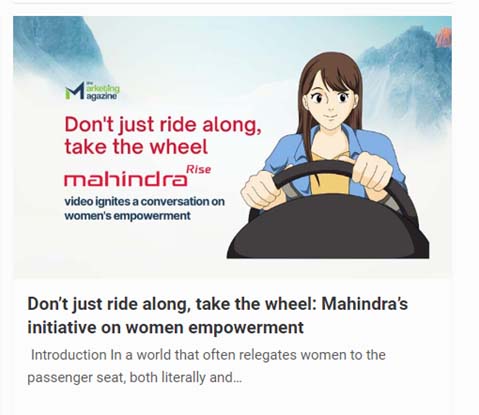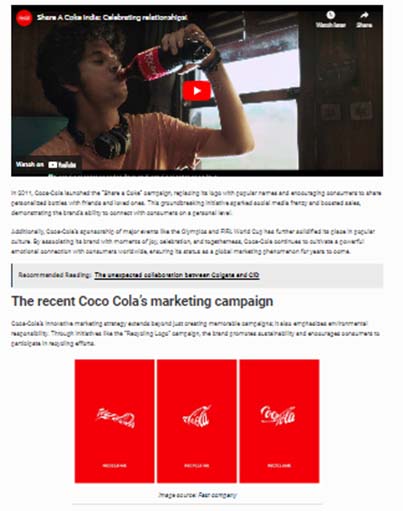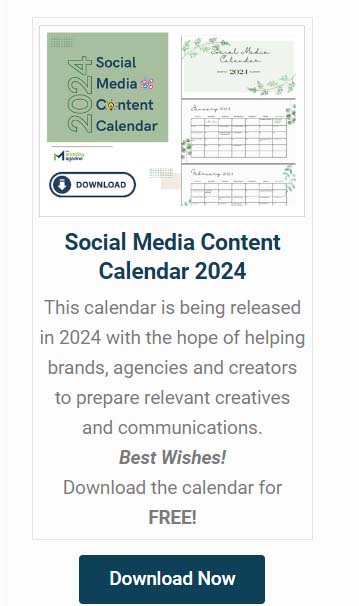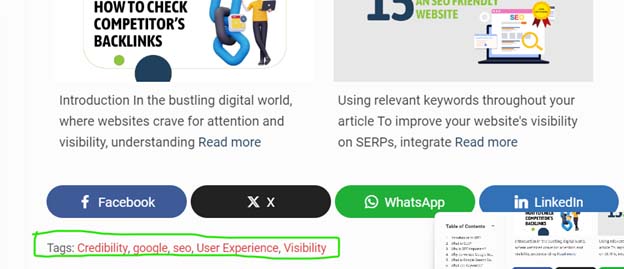Introduction
In today’s digital age, social media marketing reigns supreme. But with endless content flooding platforms every second, how do you make your brand stand out? The answer lies in the strategic foundation of your social media presence: content elements, HTML tags, and architecture.
These terms might sound technical, but fret not! This blog is designed to break them down into easy-to-understand concepts, empowering you to craft compelling social media content that gets seen, shared, and drives results.
Content elements: The bricks and mortar of your message
Imagine your social media post as a house. Content elements are the bricks and mortar that bring it to life. They encompass the various components that make up your message, each playing a crucial role in grabbing attention and engaging your audience. Here are the key content elements to consider:
- Headlines: The first impression is everything! Craft captivating headlines that pique curiosity and entice users to click. Here are some tips:
- Keep it concise and clear: Aim for around 5-8 words.
- Use strong verbs and action words to create a sense of urgency.
- Ask a question to spark user engagement.
- Highlight a benefit or solution your brand offers.

- Visuals: Images and videos are social media gold. They break up text, add visual interest, and enhance storytelling. Here’s how to leverage visuals effectively:
- Use high-quality, eye-catching images and videos.
- Ensure visuals are relevant to your content and target audience.
- Experiment with different formats like infographics, short videos showcasing product features or customer testimonials, and behind-the-scenes glimpses into your company culture.

- Text: While visuals are powerful, the quality of your text is equally important. Use clear, concise, and engaging language that resonates with your target audience. Here are some pointers for crafting effective text:
- Tailor your language to the platform. For example, keep it short and sweet on Twitter, while offering more in-depth content with storytelling elements on LinkedIn.
- Use an active voice and conversational tone.
- Inject personality and brand voice into your writing. This could involve using humor, sharing relatable anecdotes, or highlighting your company values.
- Proofread carefully for any typos or grammatical errors.
- Calls to Action (CTAs): Don’t leave your audience hanging! Tell them exactly what you want them to do, whether it’s visiting your website to learn more about a product, subscribing to your YouTube channel for exclusive content, or participating in a user-generated content contest. Here are some strong CTA examples, tailored to different goals:
- “Download our Free Ebook!” (Lead generation)
- “Shop Now and Get 20% Off!” (Sales promotion)
- “Enter to Win a Dream Vacation!” (Brand awareness and engagement)
- “Share Your Favorite Recipe in the Comments!” (Community building)

- Hashtags: Hashtags are like keywords for social media. Use relevant hashtags to increase discoverability and connect with relevant users. Here’s how to use hashtags strategically:
- Research popular hashtags related to your niche or industry using social listening tools.
- Don’t overuse hashtags – Aim for 3-5 per post, with a mix of broad and niche hashtags.
- Create your own branded hashtags to increase brand awareness and encourage user-generated content.

Pro Tip: Tailor your content elements to each social media platform. For instance, visuals like infographics might work wonders on Pinterest, while short, catchy captions with trending audio are ideal for platforms like TikTok or Instagram Reels.
HTML tags: The hidden language behind the beauty
While content elements are the visible components of your social media post, there’s a hidden language working behind the scenes: HTML tags. These act like instructions for web browsers, telling them how to display your content and even influencing SEO (Search Engine Optimization).
Here’s the thing: You don’t necessarily need to be an HTML whiz to leverage its power in social media marketing. Most platforms provide built-in features that automatically add relevant HTML tags. However, understanding some basic tags can give you more control over your content and boost your social media architecture:
- Meta Description Tags: These tags provide a brief summary of your linked content, further enticing users to click. Craft compelling meta descriptions that accurately reflect the content and highlight its value proposition. Here are some tips for writing effective meta descriptions:
- Keep it concise, ideally around 155 characters.
- Include relevant keywords to improve SEO.
- Use strong action verbs and highlight a benefit users will gain from clicking through.
- Title Tags: This tag defines the title of your linked content (like a blog post) and is often displayed in search engine results. Optimize your title tags with relevant keywords to improve SEO and entice users to click through to your website
- Bold & Italic Tags: Emphasize important keywords or phrases within your text using these tags. However, use them sparingly to avoid overwhelming your audience or making your text appear cluttered.
- Image Alt Tags: These tags provide alternative text descriptions for your images. They serve two key purposes:
- Accessibility: Alt tags allow visually impaired users who rely on screen readers to understand the content of your images.
- SEO: Search engines use alt text to understand the context of your images and improve image search ranking. Here are some pointers for writing effective alt tags:
- Be descriptive, but concise. Aim for around 120 characters.
- Include relevant keywords, but avoid keyword stuffing.
- Briefly describe the image content and its significance to your post.
Remember: Even with basic knowledge of HTML tags, you can optimize your social media content for better visibility, user experience, and SEO. By strategically using these tags, you can ensure your content reaches a wider audience and achieves your marketing goals.
Social media architecture: Building a strategic framework
Now that you understand the individual components, let’s talk about building a cohesive structure. This is where social media architecture comes in. It’s the strategic way you organize your social media presence, ensuring all the content elements work together towards your marketing goals.
Here’s how effective social media architecture benefits you:
- Consistency: Maintain a consistent brand voice, tone, and visual identity across all platforms. This fosters brand recognition and trust with your audience.
- Content Calendar: Plan and schedule your content in advance to ensure a steady flow of engaging posts. This allows you to capitalize on trending topics and strategically align your content with upcoming holidays or marketing campaigns. Here are some tips for creating an effective social media content calendar:
- Define your content pillars: Identify the key themes or topics your brand will consistently focus on in your social media content.
- Research and identify relevant holidays, events, or industry trends you can leverage for content creation.
- Experiment with different content formats to keep your audience engaged.
- Utilize scheduling tools to streamline content publishing across various platforms.
- Audience Segmentation: Tailor your content to different audience segments based on their preferences and demographics. This allows for more targeted messaging and increases the likelihood of resonating with your audience. Here are some ways to segment your audience:
- Demographics such as age, location, and gender.
- Interests and hobbies.
- Buying behavior and stage in the customer journey.
- Social media platform usage patterns.
- Campaign Alignment: Ensure your social media content aligns with your broader marketing campaigns for maximum impact. This allows for a unified brand message and a seamless experience for your audience across different touchpoints. Here’s how to achieve campaign alignment:
- Develop a cohesive social media strategy that supports your overall marketing goals.
- Create social media content that reinforces your campaign themes and messaging.
- Track and analyze campaign performance across social media platforms and adjust your strategy as needed.
- Metrics Tracking: Monitor key performance indicators (KPIs) to understand what’s working and adjust your strategy accordingly. Here are some social media metrics to track based on your goals:
- Brand awareness: Reach, impressions, mentions.
- Engagement: Likes, comments, shares, saves, clicks.
- Leads and conversions: Website traffic, leads generattion, sales conversions.
- Customer sentiment: Brand mentions, social listening reports.
By establishing a strong social media architecture, you lay the groundwork for a successful social media presence. It provides a framework for creating and delivering content that resonates with your audience, builds brand loyalty, and ultimately drives real business results.
Conclusion
Crafting a captivating social media presence requires a solid foundation. By mastering the art of content elements, HTML tags, and social media architecture, you can elevate your brand’s voice, attract a wider audience, and achieve your marketing goals. Remember, consistency, creativity, and a data-driven approach are key ingredients in the recipe for social media success. So, unleash your inner social media architect, experiment with different strategies, and watch your brand flourish online!